Great Depression Worksheets
Do you want to save dozens of hours in time? Get your evenings and weekends back? Be able to teach about the Great Depression to your students?
Our worksheet bundle includes a fact file and printable worksheets and student activities. Perfect for both the classroom and homeschooling!
Resource Examples
Click any of the example images below to view a larger version.
Fact File
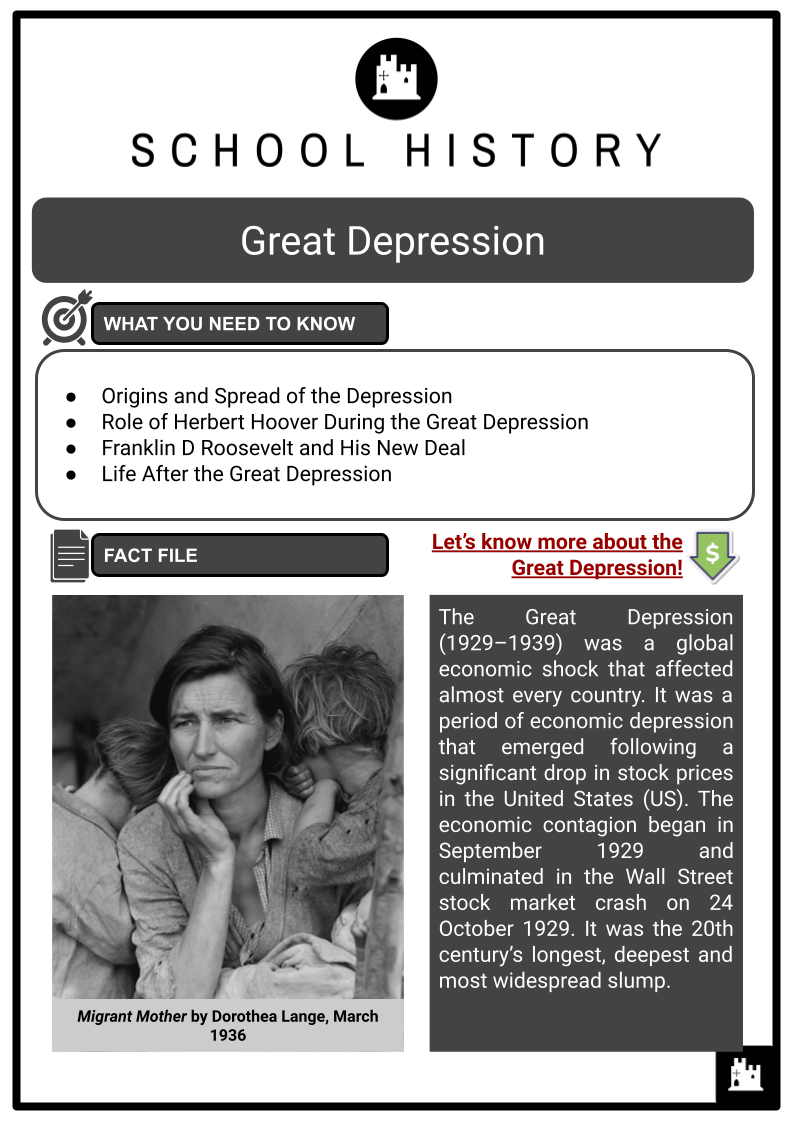
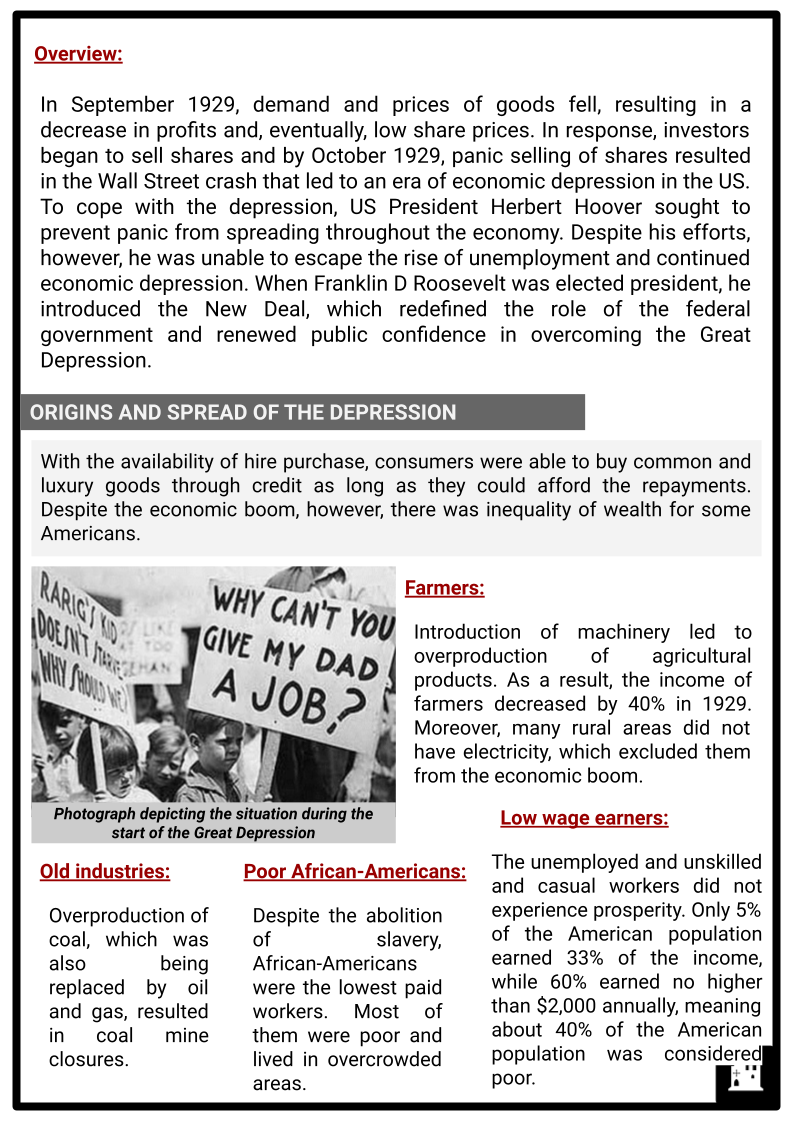
Student Activities
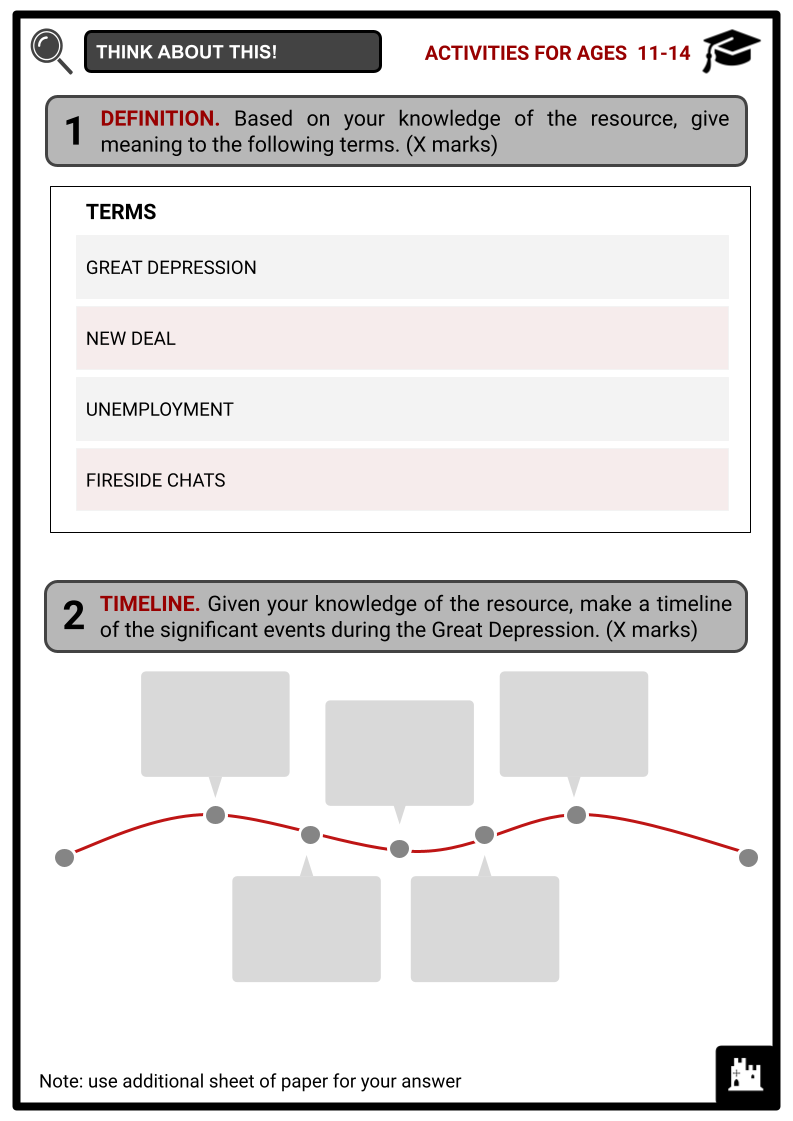
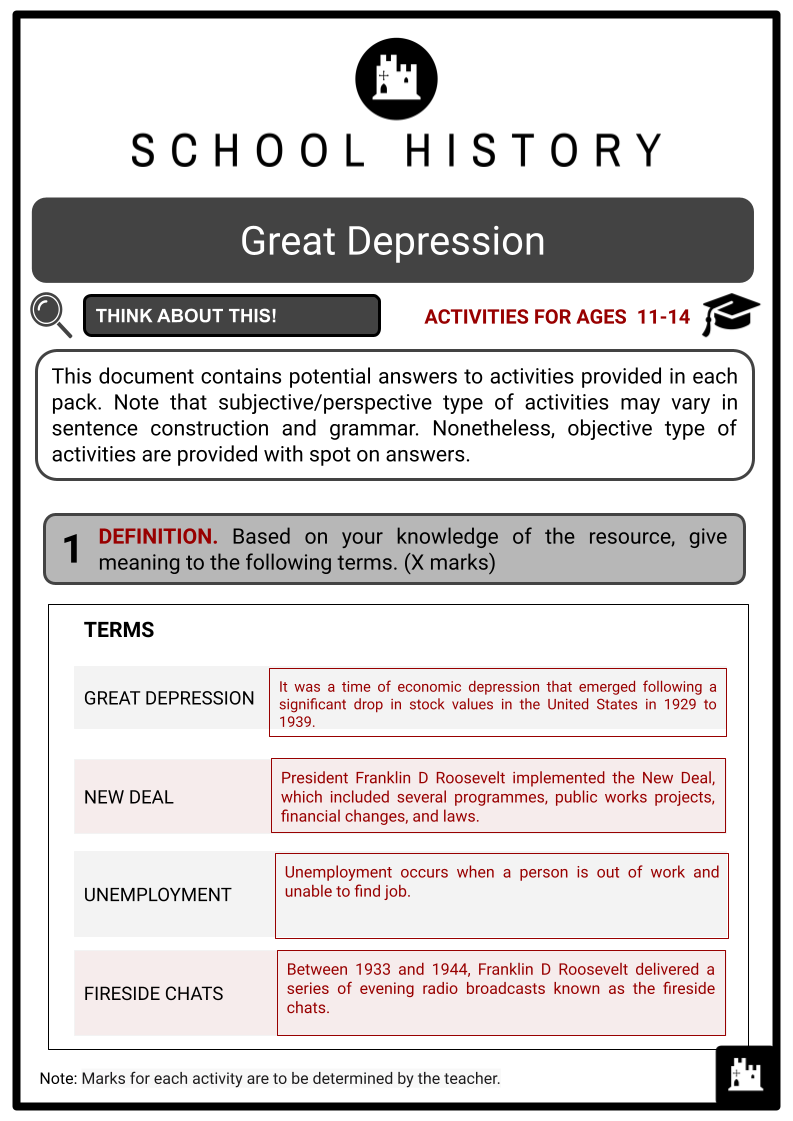
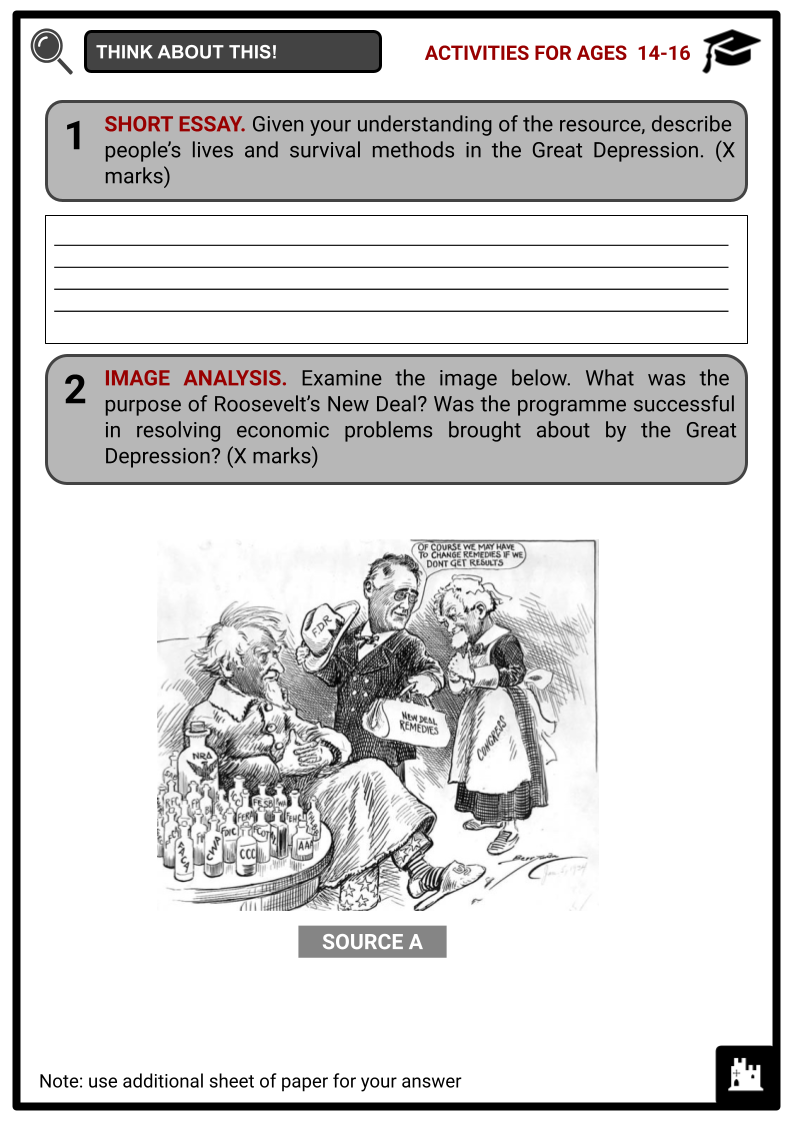
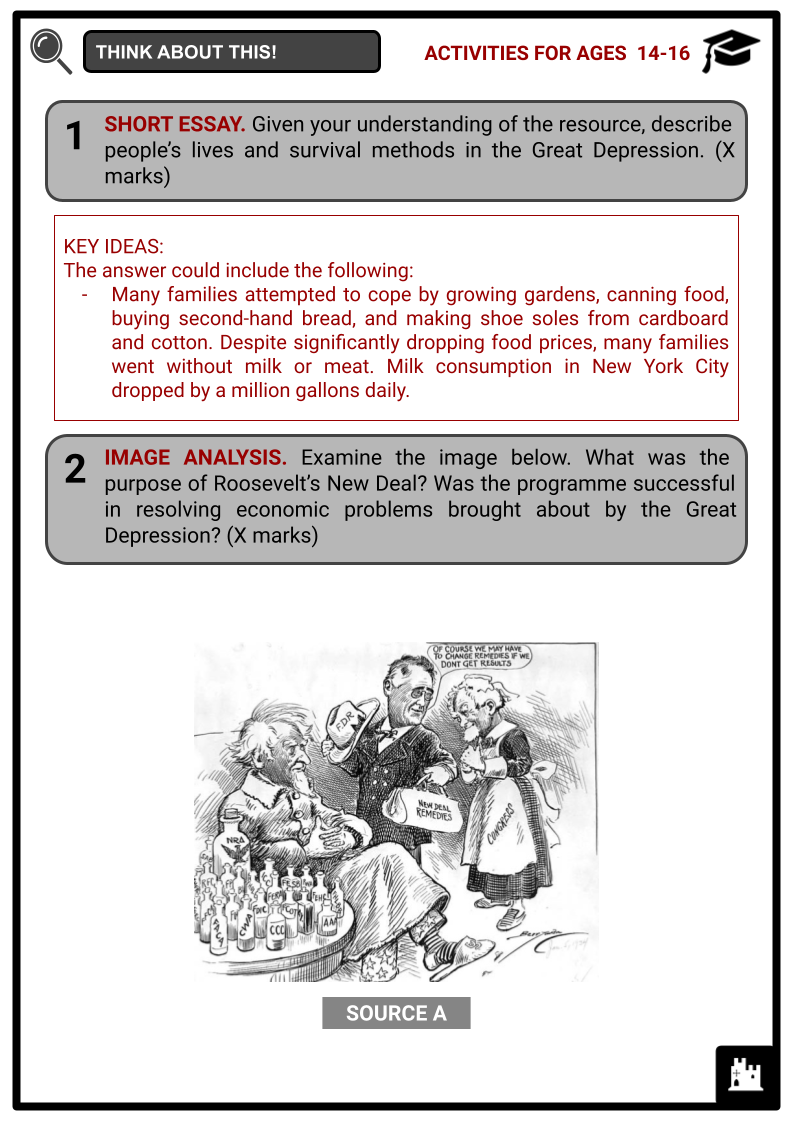
Summary
- Origins and Spread of the Depression
- Role of Herbert Hoover During the Great Depression
- Franklin D Roosevelt and His New Deal
- Life After the Great Depression
Key Facts And Information
Let’s know more about the Great Depression!
The Great Depression (1929–1939) was a global economic shock that affected almost every country. It was a period of economic depression that emerged following a significant drop in stock prices in the United States (US). The economic contagion began in September 1929 and culminated in the Wall Street stock market crash on 24 October 1929. It was the 20th century’s longest, deepest and most widespread slump.
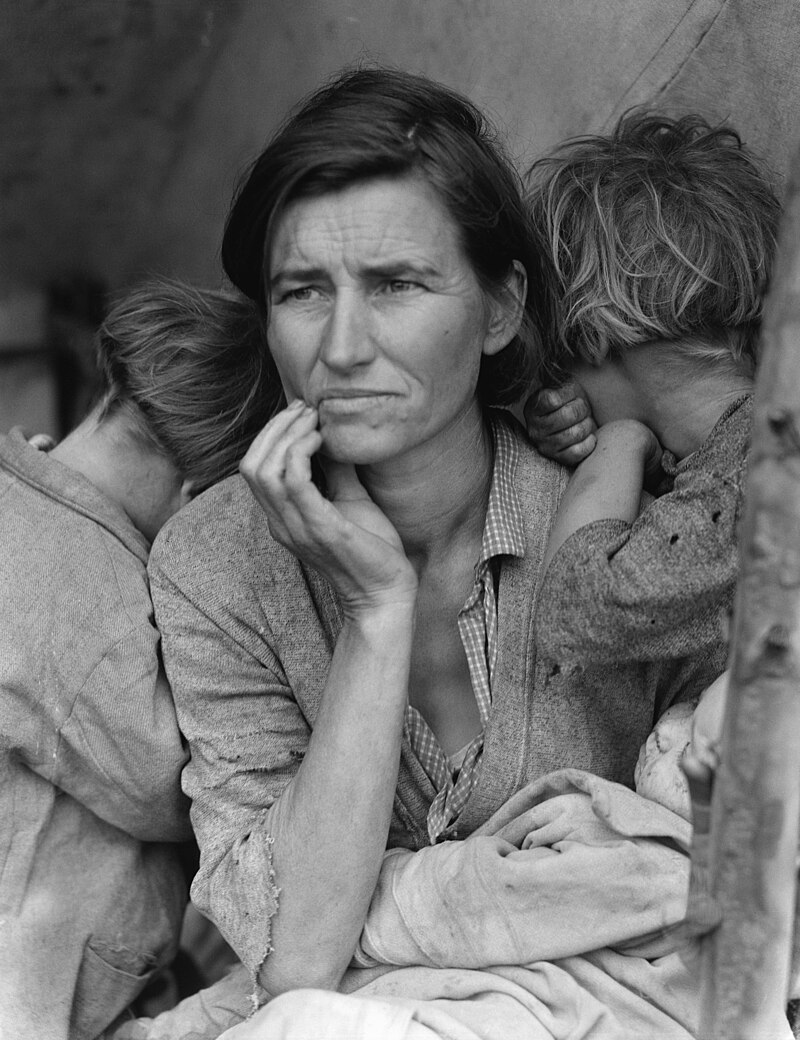
Overview:
In September 1929, demand and prices of goods fell, resulting in a decrease in profits and, eventually, low share prices. In response, investors began to sell shares and by October 1929, panic selling of shares resulted in the Wall Street crash that led to an era of economic depression in the US. To cope with the depression, US President Herbert Hoover sought to prevent panic from spreading throughout the economy. Despite his efforts, however, he was unable to escape the rise of unemployment and continued economic depression. When Franklin D Roosevelt was elected president, he introduced the New Deal, which redefined the role of the federal government and renewed public confidence in overcoming the Great Depression.
ORIGINS AND SPREAD OF THE DEPRESSION
- With the availability of hire purchase, consumers were able to buy common and luxury goods through credit as long as they could afford the repayments. Despite the economic boom, however, there was inequality of wealth for some Americans.
- Farmers: Introduction of machinery led to overproduction of agricultural products. As a result, the income of farmers decreased by 40% in 1929. Moreover, many rural areas did not have electricity, which excluded them from the economic boom.
- Old industries: Overproduction of coal, which was also being replaced by oil and gas, resulted in coal mine closures.
- Poor African-Americans: Despite the abolition of slavery, African-Americans were the lowest paid workers. Most of them were poor and lived in overcrowded areas.
- Low wage earners: The unemployed and unskilled and casual workers did not experience prosperity. Only 5% of the American population earned 33% of the income, while 60% earned no higher than $2,000 annually, meaning about 40% of the American population was considered poor.
How did the Great Depression affect American society?
- Even before the Great Depression, many American workers were paid low wages. By 1933, the level of unemployment had risen to 25%, equivalent to about 13 million Americans, making it the highest rate in US economic history. The number did not drop below 10% until the US joined the Second World War in 1939.
- From 1930 to 1940, farm production was also affected by the stock market. Farmers were plagued by chinch bugs, bad weather conditions and low prices for produce.
- In 1934, drought hit American farmers. The following year, rain then devastated farmers as they were unable to harvest due to wet fields. When drought returned, much of the American region became a dust bowl.
- Moreover, grasshoppers invaded fields, damaging corn, beans and pasture crops. Despite trying to produce more, farmers were still unable to pay their debts. As a result, many farmers went bankrupt, lost their farms and became angry with the government.
- Some participated in ‘farm strikes’, setting up blockades on farm products and preventing delivery trucks from entering the cities. Despite their efforts, prices of farm products did not increase.
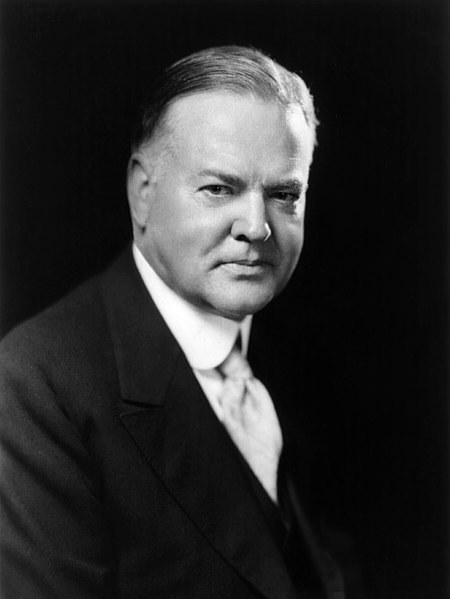
ROLE OF HERBERT HOOVER DURING THE GREAT DEPRESSION
- In 1930, Hoover passed the Smoot-Hawley Tariff Act, which increased import duties on foreign goods. As a result, foreign countries refused to trade with the US. In 1929, the Agricultural Marketing Act assisted American farmers through marketing groups called co-operatives. This Act tried to control the prices of farm goods by ensuring the products were sold and the farmers earned a profit.
- Moreover, relief agencies were also set up to assist with and coordinate local relief efforts, for example the President’s Organisation for Unemployment Relief. He insisted that each community and state assume full responsibility for the employment of its people. Hoover also cut taxes by $130 million. In February 1932, he introduced the Reconstruction Finance Corporation intended to stimulate industry and create jobs through federal aid worth $2 billion.
- Loans were given to ailing banks, insurance and railroad companies. After the crash of the stock market, many Americans lost their savings and were unable to pay their debt. By 1932, almost 12 million were unemployed and began to join marches addressing the government. Wages and hours were slashed.
- The majority couldn’t afford to buy, so factories were not producing, resulting in unemployment and low purchasing power. Americans suffered from the worst and longest economic depression in US history.
Economic Effects of the Great Depression:
- Silver lining: economists now understood how to safely stimulate the economy during a recession by responsibly increasing the number of certain loans based on the likelihood of being paid back and the duration of return on investment (ROI). For example, mortgages have a longer ROI versus most other types of loans. Certain variables beyond a bank’s control, such as interest rates, can affect the bank itself, as they have to pay out more to people withdrawing.
- As banks begin to show signs of bankruptcy due to over-issuing loans, or mistrust in the government, people may withdraw their cash. So banks begin to lose capital, increasing fear in its remaining customers who will likely also withdraw their money in anticipation of the bank’s impending bankruptcy. This restructured their understanding of how capital ought to be allocated to stabilise a volatile situation and stimulate a recessive economy.
Social Effects of the Great Depression:
- Aside from the more obvious effects on society, such as widespread unemployment, homelessness and starvation, the Great Depression also led to the repeal of prohibition. Similar to today’s war on drugs, prohibition hurts the poor more than the rich, often due to unregulated safety standards and product quality. Plus, at this point, it is fair to say the whole country needed a drink.
- As people became desperate for a home, they built shanty towns in and around cities across the nation which came known as Hoovervilles, after the president who was blamed for the intolerable economic and social conditions.
- Race relations were severely damaged, and the Ku Klux Klan grew to its all-time highest point during this period. People became very prudent with their spending, prolonging the recovery of the economy as trust in banks was crucial for economic growth.
- The Bonus Army was a group of 43,000 demonstrators (of which 17,000 were veterans of the First World War). They marched on Washington, DC in mid-1932 to demand early cash redemption of their service certificates. Upon returning from WWI, many war vets found themselves out of work, as it was the start of the Great Depression.
- The World War Adjusted Compensation Act of 1924 had awarded them bonuses with compound interest. However, they could only be redeemed in 1948. They demanded immediate payment. On 28 July, the US Attorney General ordered the veterans to be removed, which was met with resistance. Two veterans were killed.
- President Hoover then ordered the US Army to clear the marchers’ campsite. The Bonus Army marchers and their families were driven out, and their shelters and belongings burned.
- After further struggle, in 1936, Congress overrode new president Roosevelt’s veto and paid the veterans their bonus nine years early.
FRANKLIN D ROOSEVELT AND HIS NEW DEAL
- In the November 1932 presidential election, Roosevelt defeated reelectionist Hoover with 22,810,000 votes compared to his rival’s 15,759,000 votes. Franklin D Roosevelt, a Democrat, won by a landslide 42–6 states and became the 32nd president of the US. Hoover’s unsuccessful attempts to solve the depression made him unpopular.
- Roosevelt was the governor of New York before being elected president. He popularised ‘fireside chats’ or a series of addresses to the public through radio broadcasts. He introduced the New Deal, which redefined the role of the federal government and renewed public confidence in overcoming the Great Depression.
- During his presidency, Roosevelt proposed the New Deal to address the following:
- Immediate relief for the unemployed and the homeless.
- The regulation of the banks and the stock market.
- Providing debt relief.
- Addressing the management of farms with New Deal programmes to tackle the consequences of the dust bowl that had destroyed over 100 million acres of farmland.
- Aiding industrial recovery.
- Initiating numerous public works and construction projects to provide jobs for the unemployed.
- The goals behind the New Deal were also in response to the rising suspicion that Hoover’s conservative economic practices caused the Great Depression or, at the very least, made things far worse than they should have been. Given that the country was desperate for restored economic order, the New Deal quickly gained a tremendous amount of support.
- Historians suggest that the election of Roosevelt was the beginning of a democratic coalition in American politics. It meant that African-Americans and other minority groups in the US would be heard. Moreover, Roosevelt showed optimism in facing the Great Depression compared to Hoover’s failed attempts at addressing the crisis.
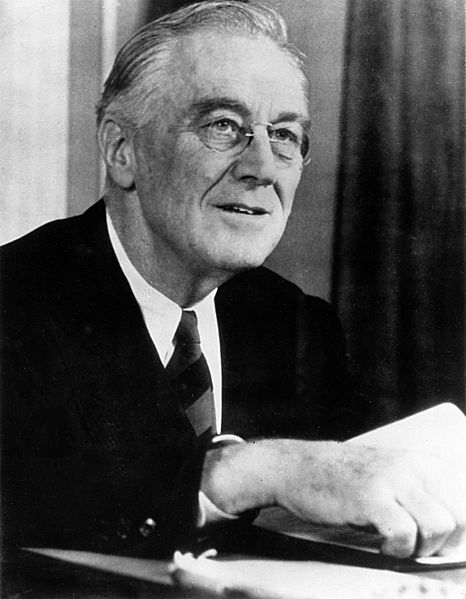
AIMS OF THE NEW DEAL
-
- To control the budget
- To regain public confidence by abolishing prohibition
- To keep in touch with the people through ‘fireside chats’
- To form organisations (alphabet agencies) that would address specific crises
- To reopen closed banks through back-up using federal reserves
- To revive the stock market
- Roosevelt established many now well-known organisations, such as the AAA, CCC, PWA, NRA, FERA, TVA, SEC, FCS and the FDIC, totalling over 100 agencies. These are often referred to as ‘alphabet agencies’ or ‘alphabet soup agencies’ and were initiatives that would each directly address specific issues to provide relief and reform.
- Agricultural Adjustment Agency: The goal in establishing this agency was to boost agricultural sales by reducing surpluses. Farmers were paid to not plant a portion of their crops and to slaughter a portion of their cow herds, decreasing supply to match demand and artificially increasing prices. An exclusive tax was placed on industries that directly processed farm products to subsidise the cost of paying off the farmers. The agency became an overseer for the distribution of these subsidies.
- Federal Emergency Administration: This agency was among the first agencies to be established under the New Deal. It managed grants and loans to finance other agencies under the objectives of the New Deal. While the creation of jobs was more expensive than to simply hand the money directly to its intended recipients, the mental benefit of earning this income was invaluable.
- Civilian Conservation Corps: This agency incentivised unemployed and unmarried men to take up unskilled labour jobs in the conservation and development of natural resources on rural land. Food, shelter and clothing were provided on top of a $30 monthly wage, $25 of which had to be sent home to their families.
- National Recovery Administration: The underlying incentive was to reduce destructive competition. Minimum wage, maximum weekly hours and minimum prices were established. Industries collaborated to create codes of fair competition. While businesses often adorned their campuses with symbols of the NRA, they did not always adhere to its rules.
- In order to finance the New Deal, Roosevelt borrowed huge amounts of money for projects. He also ensured there was no budget deficit. Members of the conservative majority in the Supreme Court argued that some of Roosevelt’s New Deal programmes, such as the National Recovery Administration and the Agricultural Adjustment Administration, were unconstitutional.
LIFE AFTER THE GREAT DEPRESSION
- The government launched enormous military spending in 1940 and began recruiting millions of young men that year. By 1945, 17 million people had entered military duty, but this was insufficient to absorb all of the unemployed. The government subsidised wages through cost-plus contracts during the war.
- During the war, structural boundaries were substantially removed, particularly informal regulations prohibiting the hiring of women, minorities, and workers over 45 or under 18. Executive Order 8802, issued in 1941, prohibited racial discrimination in war-related employment and established the Fair Employment Practises Commission to enforce it. Strikes were substantially reduced as unions urged their members to work harder.
- Tens of thousands of new industries and shipyards were erected, and they were made more accessible by expanded bus services and nursery care for youngsters. Wages for workers rose, making it too expensive to sit at home. Employers retooled their workforce so that unskilled new employees could do occupations that formerly required skills that were now in short supply. Roosevelt’s deteriorating popularity was visible throughout the US in the business world, the press, and the Senate and House in 1938.
- Defence spending and military mobilisation had initiated one of the largest booms in American history by the end of 1941, before American entry into the war, eradicating the last traces of unemployment.
Frequently Asked Questions
- What was the Great Depression?
The Great Depression was a severe worldwide economic downturn that took place during the 1930s. A significant decline in economic activity, widespread unemployment, and financial hardship marked it.
- What were the main causes of the Great Depression?
The main causes included the stock market crash of 1929, bank failures, a reduction in consumer spending, the Dust Bowl, and a global economic downturn.
- How did people survive the Great Depression?
During the Great Depression, people coped by embracing frugality, budgeting carefully, and turning to rural living for subsistence farming. Communities provided crucial support through resource-sharing and events. Bartering, odd jobs, and creative cooking helped secure income and stretch resources. Making and repairing clothing, home gardens, and low-cost entertainment became prevalent. Government assistance programmes and extended family support, often nearby, offered relief. Surviving the era demanded resilience, resourcefulness, and reliance on community bonds.
